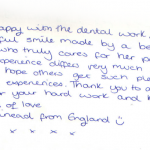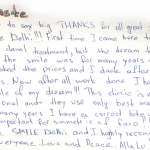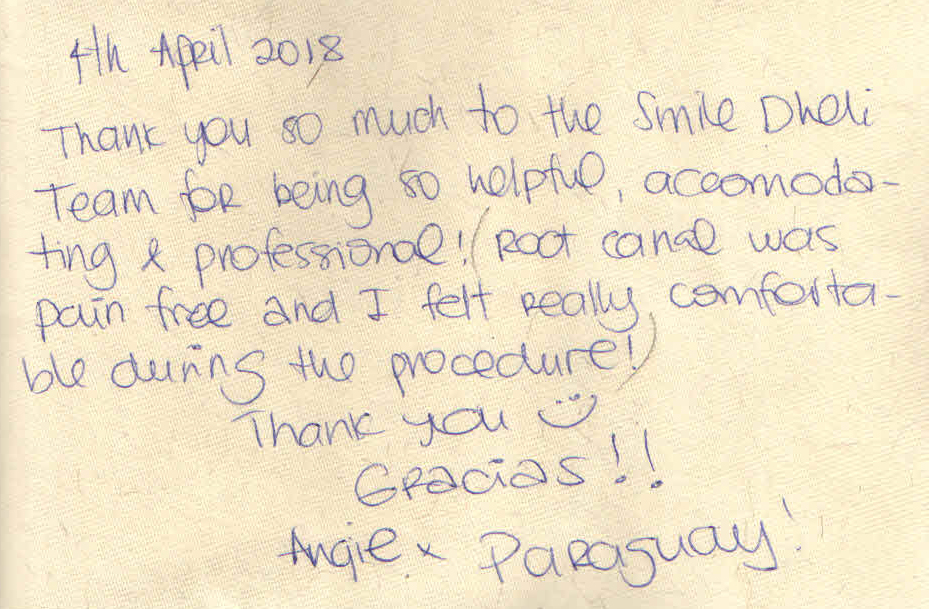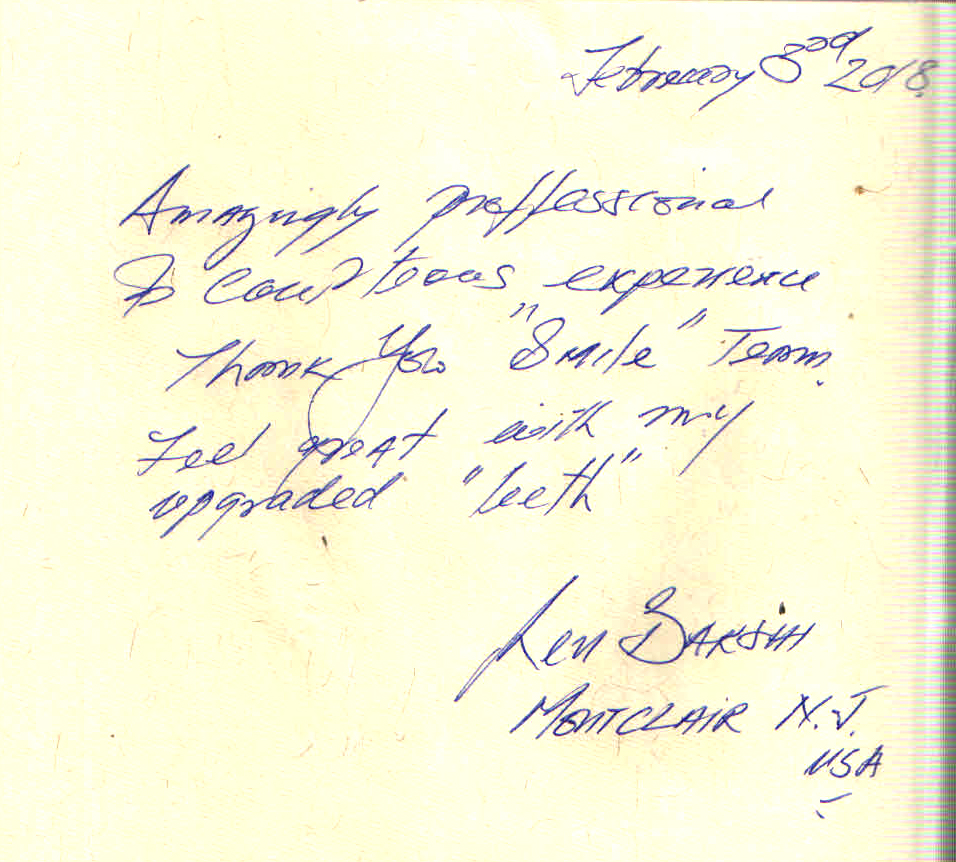If You Are Not Replacing Your Missing Teeth, This Is What You Are Heading To….
We tend to put a lot of stress on our teeth, be it eating, playing sports and chewing on anything from pencils to bubblegum.
Each tooth is secured in place by the bone and tissue surrounding it. All teeth fit into their sockets and bones snugly. Bone is the primary support for your pearly whites.
It’s important to have sufficient bone around your teeth for both aesthetic and functional reasons. If the loss of teeth or extraction results due to gum disease or an accident, the bone and the gum tissue surrounding the missing teeth heal at a slightly lower height than the adjacent tissue – often resulting in a bone defect.
Teeth are actually much longer than they appear in the mouth, with a long root extending below the gums and into your jawbone. This deep anchor provides the strength that is needed to handle the pressures of chewing.
In addition, a special ligament binds the teeth securely into place for maximum support.
Bone loss occurs as a result of both, chronic gum disease (periodontitis) and loss of teeth. The effects of gum disease can become quite drastic. It begins as a mild gum inflammation but the disease infects tissue beneath the teeth and can spread throughout surrounding tissue, resulting in a negative impact on your bones.
In such advanced cases of periodontitis, the bacteria gradually eat away at the underlying jawbone and at the periodontal ligaments that connect the tooth to the bone. This makes gum disease treatment an important step in preventing bone loss.
In reputed dental clinics in India, patients are being educated about the importance of gums i.e. gums are the foundation of the teeth.
The most common cause of bone loss is a missing tooth/ teeth which have not been replaced. Jawbone is preserved through the continuous pressure and stimulus of chewing.
In the first year after tooth extraction 25% of bone is lost. This bone loss is continuous and occurs in the bone which was supporting the lost tooth.
A healthy mouth includes teeth surrounded snugly by supporting bone and tissues. Bone loss in teeth not only leaves unattractive spaces but it can also make it difficult to achieve an aesthetic restoration.
Bone loss in the oral cavity may occur due to many causes. Certain habits and dental problems as well as the effects of time, can cause the bone to resorb, or dissolve.
Factors that may contribute to dental bone loss include:
- Infection – Given the link between gum disease and bone loss, bone can be lost through infection that damages the bone.
- Malaligned teeth – Such teeth create a situation where normal chewing doesn’t occur, causing loss of the needed stimulus to the bone. Therefore, resulting in bone loss.
- Smoking – Smoking cigarettes, cigars and pipes have all been linked to increased risk of advanced gum disease and bone resorption.
- Ill-Fitting Dentures – Dentures should be checked by your dentist on a regular basis. Poor fit can cause your dentures to rub against your jaw and wear away the bone over time.
- Osteoporosis – Adults who are susceptible to bone loss, especially women, may be more likely to experience some bone loss.
- Bad Oral Hygiene Habits – Bad oral habits can have serious consequences. Good oral hygiene is important to keeping your dental health at its best.
Replacing teeth with full or partial dentures doesn’t solve the problem as the dentures exert a very small amount of chewing pressure on the bone compared to natural teeth, as low as 10% or less.
It can accelerate bone loss by wearing away at the ridges of bone they are placed on. Every time you bite down or clench your teeth you are placing pressure on the ridge, resulting in its resorption. In many cases, the denture will loosen because of the inability of the resorbed ridge to stabilize the prosthesis.
The above also results in sore spots and difficult or painful chewing. This boss loss may result in the need for new dentures to replace ill-fitting prosthesis.
How Bone Loss Can Be Prevented?
Bone loss can be prevented by giving the jawbone a replacement tooth with a root that can exert the similar pressure as our natural teeth. This is done immediately after the removal of the tooth by replacing single teeth with a dental bridge or with dental implants, or by using a fixed implant-supported bridge.
A single-tooth implant or a dental bridge with three to four teeth supported by two implants provide a biting power of 99% of natural bite force.
In cases where bone has already been lost, where we need enough height of the ridge for any teeth replacement with implants, and when replacing the back teeth, we also need enough width. In such cases bone grafting might be needed to provide enough bone for dental implant placement.
Dentists in India, often place the bone graft at the time of placing implant unless the bone loss is severe, in which case it might need to be done as a separate procedure.
We also use bone grafting to repair lost and damaged bone around teeth that have suffered from severe gum disease.
A bone graft not only replaces lost bone, it also stimulates the jawbone to regrow and eventually replaces the bone graft with the patient’s own, healthy bone. We use various types of bone graft material, depending on the patient, including materials that require less healing time.
We can measure the exact width and height of your ridges and assess how much, if any, bone grafting is actually needed by the use of CT scans. In many cases we can find enough bone to use for implants.
Dentists in Delhi are dedicated in solving periodontal disease problems and ensuring you healthy gums, and improving the function and beauty of your smile.
How Do You Treat Bone Loss?
Fixing Bone Loss begins with addressing periodontal disease. Bone loss may be corrected with reconstructive periodontal surgery if the periodontal structures surrounding the teeth are healthy.
Depending on the extent of the bone lost such mobility can be reversed with proper periodontal therapy. The first step in addressing bone loss is clearing up the infection. Bone loss surrounding loose teeth may become more stable once the teeth and disease process is removed.
If the periodontal structures have minor bone loss, a simple and non-surgical procedure such a scaling may be performed by gently cleaning out all infected areas manually.
If you allow loose teeth remain in the jaw bone, your bone loss is expedited. The sooner you address such problems the more favorable result you will be able to achieve.
One or more of the following treatments will likely follow:
- Tooth removal and replacement for loose or missing teeth
- Bone reshaping, which includes smoothing a bone to remove potential hiding spots for bacteria
- Bone regeneration, a surgical procedure in which bone grafting with natural or synthetic bone is performed.
It’s also important to follow your dentist’s post-treatment guidelines to increase your chances of a successful procedure and help prevent bone loss from recurring.
Dental clinics in Delhi are routinely treating gum health and bone loss by various procedures so that you can have your own natural teeth in your mouth till you live.
Practicing excellent oral hygiene and visiting your dentist regularly not only benefits your oral health but contributes to your overall health as well. So for better health, take care of your teeth and gums.
Posted by- Dr Shriya





























































